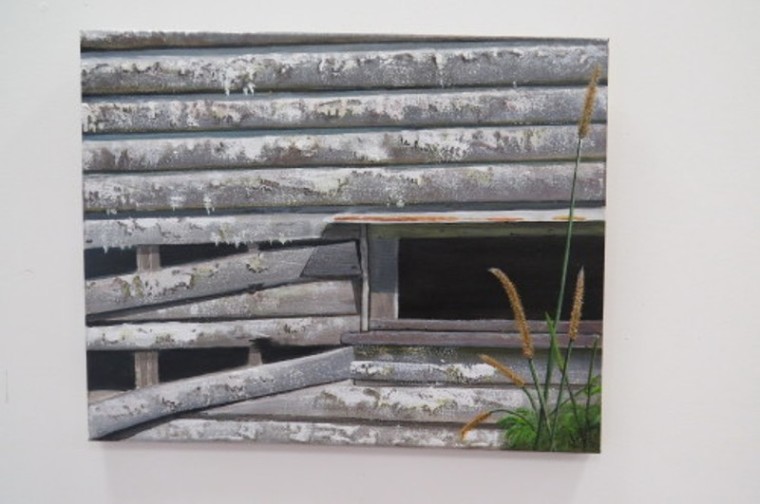
This is more than one can take - Chemistry Dad jokes: “Chemists have solutions” and “Never trust an atom, they make up everything”. There are also a range of two-liners that are a little more scientific, such as “A neutron walked into a bar and asked the barman the price of a drink. The barman said 'for you, no charge.'”
But the slogan that chemists think is no joke is: “Chemistry is the central science”. They say that that physics is applied mathematics, chemistry is applied physics and biology is applied chemistry. This is tongue-in-cheek, but it illustrates that chemistry is right in the middle between the other sciences, trying to answer some of the mysteries of the world around us in a way that is a bit more conceptual than some sciences but more practical than others.
This half-year round-up of science innovations is sourced from the magazine of the Royal Australian Chemical Society (RACI), “Chemistry in Australia” (May, June and July editions).
Chemistry student wins award – in aerospace!
A student member of the RACI, Vanessa Lussini from Queensland University of Technology, has developed sensors to alert maintenance crews of aircraft when some of the surface materials are failing. She explains: “Corrosion is like a cancer to metal, and paint acts like a sunscreen which needs to be re-applied before the structural integrity of an aircraft is compromised.”
But, she warns, it is not desirable to re-paint too often because this adds unnecessary weight to the aircraft, and it is expensive in time and money. The organic (carbon-based) compounds she has developed can help detect some of the initial reactions that begin to cause corrosion, before the corrosion itself would be seen by the eye of a maintenance mechanic, allowing them to apply the paint “just in time” but “not too soon”.
Lussini is the first woman to win the 2015 Young Innovator Scholarship for the Defence Industry – it is worth $10,000. She says that although she developed these sensing compounds for aviation, they may be useful for other applications such as bridges and other structures.

Bomb-proof concrete
At the University of Adelaide, Chengquing Wu and his team (including colleagues at Tianjin University in China) are investigating how new technologies can improve the performance of the ancient building material, concrete.
Why does it need improving? The best quality concrete today cannot withstand the blast pressure due to the shock wave of a 10 kg explosive. By making their new material flexible and stronger by manipulating its microscopic structure, these researchers have a substance that can withstand the blast from a 50 kg explosive.
They call their mixture UHPC (Ultra-high performance concrete), and they have made it by rationally changing the composition of regular concrete, one thing at a time. They have combined current self-compacting concrete mixes with 1-3% steel or synthetic fibres with hooked, waved or spiral structures. They then added the usual carbonates, silicates and alumnates – but in the form of nanoparticles so small they can only be seen under a microscope.
Romans chapter 1 verse 20: “For the invisible things of him from the creation of the world are clearly seen, being understood by the things that are made, [even] his eternal power and Godhead; so that they are without excuse:...”
Although, at present, their new concrete is five times the price of conventional concrete, they are continuing their research to find ways of reducing the cost. Hopefully their work will result in our bridges, buildings and other national infrastructure being much safer from any attack or natural disaster.
Plastics made with the help of spinach
Many of our everyday materials, such as the wide array of plastics we use, are made from long chains of molecules called polymers (“poly” means “many”). The reactions to make these useful substances are very hard to control efficiently, and they use small amounts of compounds called “catalysts” to speed up the process – and sometimes to make the reaction work at all.
In the past, these catalysts have been derived from very rare metals and have been so toxic that the resulting plastics have needed several purification steps to make sure they are totally cleansed of the impurities. This is wasteful of chemicals and time, and results in a decreased yield of pure plastic – all of which adds to the cost.
So researchers have been searching for natural substances to be “greener”, more efficient and less toxic catalysts. At the University of New South Wales, Professor Cyril Boyer and his PhD student Siva Shanmugam have recently had success in modifying a very common pigment from green plants such as spinach – chlorophyll A – to act as a catalyst in conjunction with light. They have thus far produced a wide range of materials suitable for biomedical applications, and they are able to control the conditions of the reactions more accurately (producing a more consistent, higher quality end-product).
We should all thank a research chemist today
Having looked at these examples, I understand the idea of “centrality”, in that chemistry helps to solve a very wide range of everyday problems that may seem to belong to some other type of science, and in the process it makes our lives safer and more comfortable.


Dr Mark Tronson - a 4 min video
Chairman – Well-Being Australia
Baptist Minister 45 years
- 1984 - Australian cricket team chaplain 17 years (Ret)
- 2001 - Life After Cricket (18 years Ret)
- 2009 - Olympic Ministry Medal – presented by Carl Lewis
- 2019 - The Gutenberg - (ARPA Christian Media premier award)
Gutenberg video - 2min 14sec
Married to Delma for 45 years with 4 children and 6 grand children